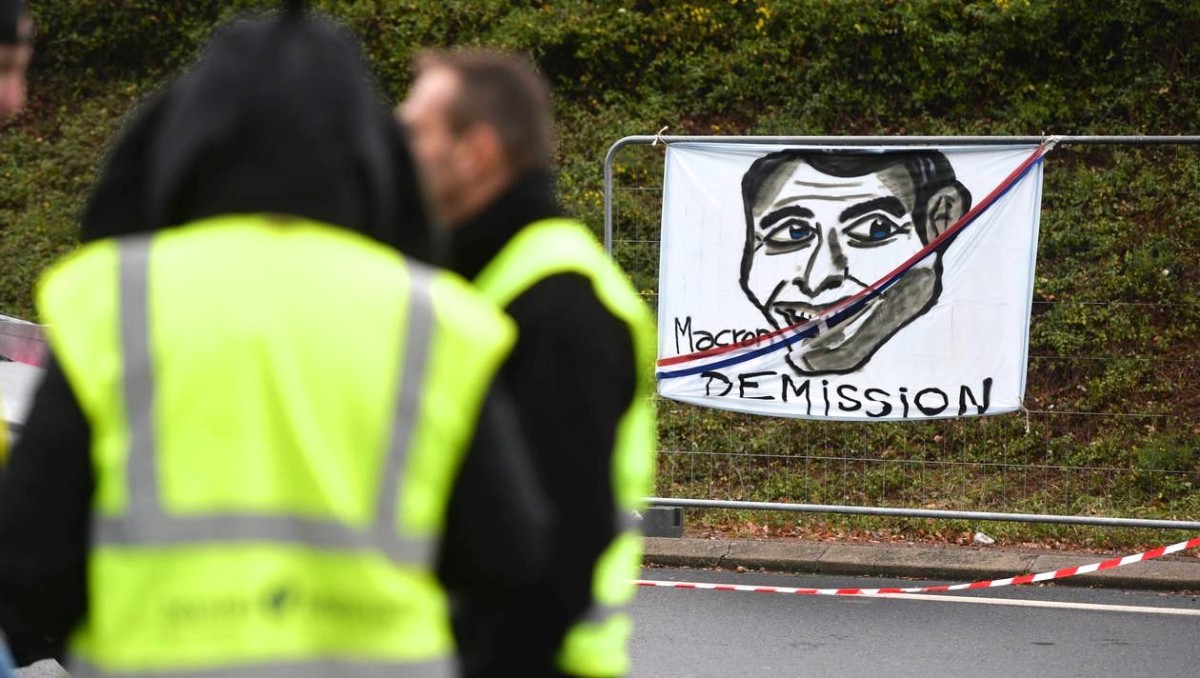The French president, Emmanuel Macron, has instructed his prime minister to hold talks with protest groups after anti-government demonstrations led to the worst violence in central Paris in a decade, with more than 100 people injured as cars and buildings were set alight.
Macron is facing his biggest crisis since taking office 18 months ago after the violence erupted on Saturday following weeks of street protests that began against fuel taxes and have turned into an anti-government movement.
The Élysée and key ministers appeared to rule out imposing any kind of state of emergency after thousands of masked protesters from the gilets jaunes – named for their fluorescent yellow jackets – fought running battles with riot police, torched cars, set fire to banks and houses and burned makeshift barricades.
Macron, who had said he would “never accept violence”, instructed the prime minister, Édouard Philippe, to meet what he has called legitimate protest groups and opposition politicians this week in an effort to calm tensions and stop “professional” rioters from infiltrating street demonstrations.
The Paris prosecutor Remy Heitz said 378 people were in custody, including 33 under the age of 18. He said many of those arrested in battles with police were men aged between 30 and 40, often from regions far from Paris, who had “come to fight police while claiming to be part of the gilets jaunes movement”.
The interior minister, Christophe Castaner, and his head of staff will be questioned by a senate committee on Tuesday over how thousands of protesters were able to play cat and mouse with police through central Paris for hours.
Macron flew back from the G20 summit in Argentina on Sunday and went straight to inspect damage at the Arc de Triomphe. Graffiti all over the base of the 19-century monument read: “We’ve chopped off heads for less than this” and: “Topple the Bourgeoisie.” Scores of used teargas canisters filled the gutters.
Near the Champs Élysées there were splashes of paint on buildings after protesters had paint-bombed police. Used bottles of eye-drops on the ground indicated that some protesters – many of whom wore ski-masks and breathing equipment – stood their ground despite the teargas fired from rows of police behind shields.
Along the Avenue Kléber near the Arc de Triomphe on Sunday morning, passersby peered at scorched pavements where the burnt-out carcasses of cars had been towed away, and where a private residence had been set alight. Graffiti read: “Babylon is burning.”
The far-right leader Marine Le Pen and Jean-Luc Mélenchon, head of the leftwing party La France Insoumise, both called on Macron to dissolve parliament and hold elections.
The violence started on Saturday in broad daylight on the edges of a peaceful demonstration by the gilets jaunes movement, which began two weeks ago in protest at rising fuel prices and a new green fuel tax.
After three successive Saturday citizens’ marches in Paris organised on social media, the security forces seemed at a loss to stop the rioting, with groups of masked men spilling into nearby streets, ripping up benches and traffic lights and hurling bits of paving stones from roadworks.
An Élysée spokesman said Macron wanted policing procedures to be reviewed in terms of “maintaining order in the days to come”. No date was set for the prime minister to meet representatives from the gilets jaunes movement to revive talks that last week amounted to nothing.
Demonstrators continued to stage small roadblocks in towns around France on Sunday. Other cities saw violent clashes between protesters and police on Saturday, notably Toulouse where 48 police officers were injured. In the town of Puy-en-Velay on Saturday, the prefect’s office briefly caught fire after it was petrol-bombed.
Over the weekend more than 130,000 people demonstrated across France in the gilets jaunes movement, and there were more than 580 roadblocks around the country.
Originally published by The Guardian

















